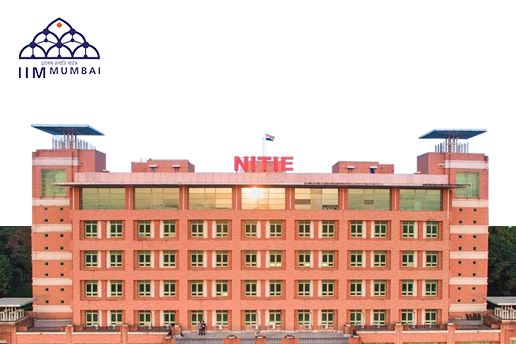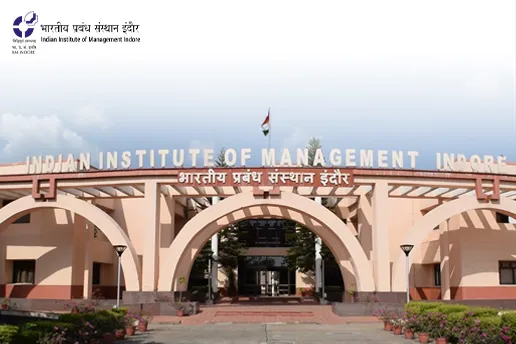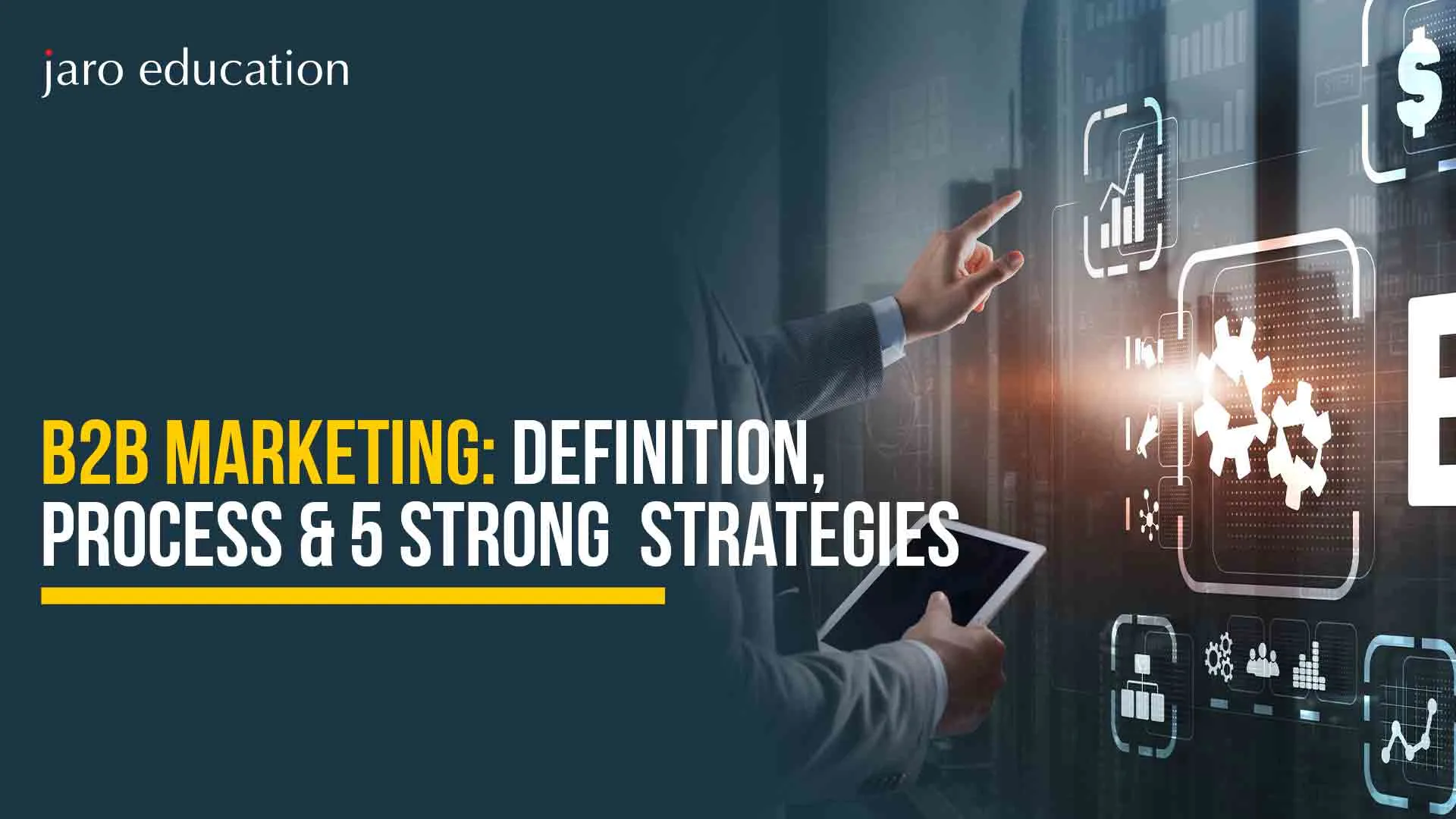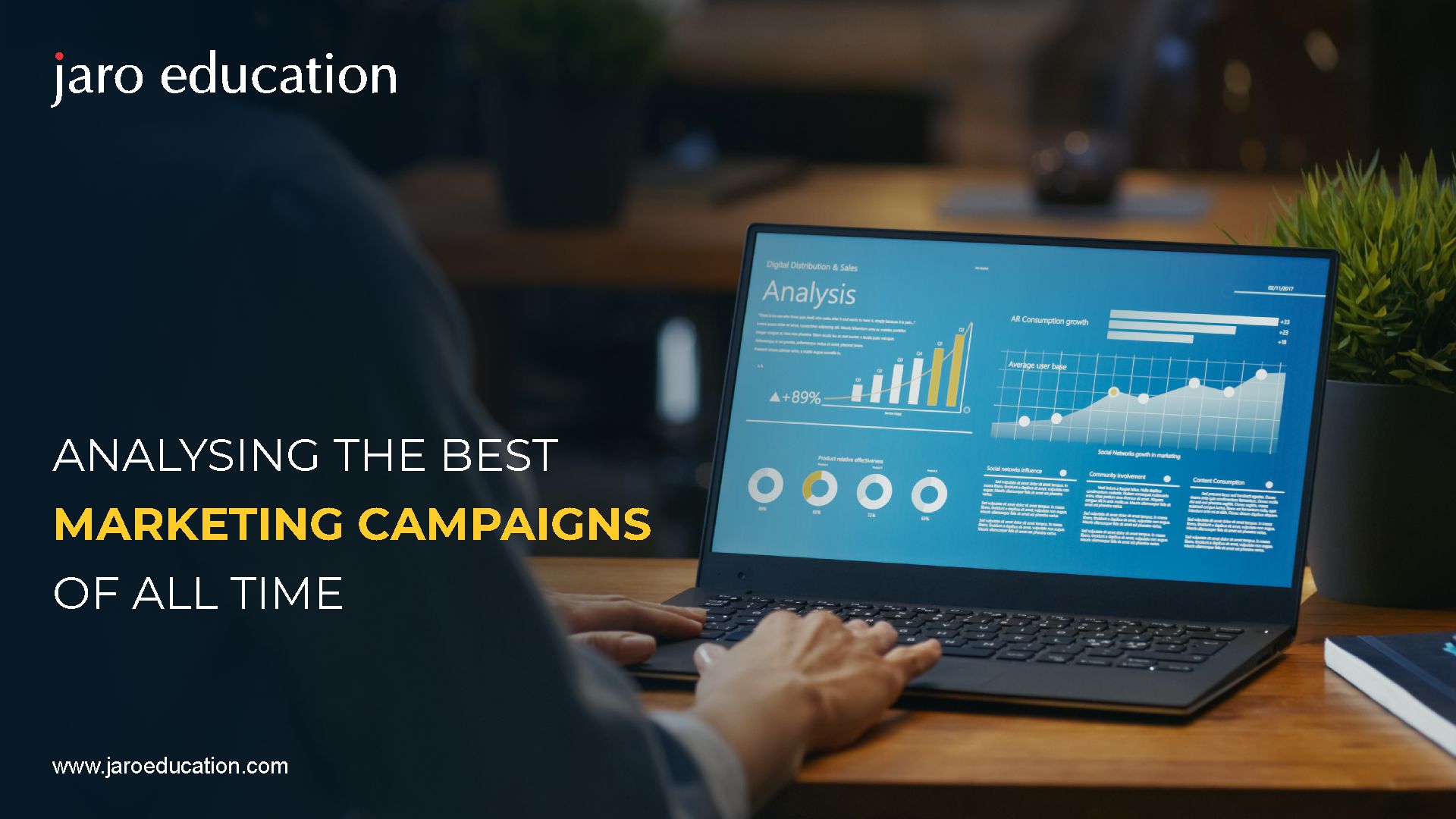Is Traditional Marketing Still Useful in 2025
Table of Contents
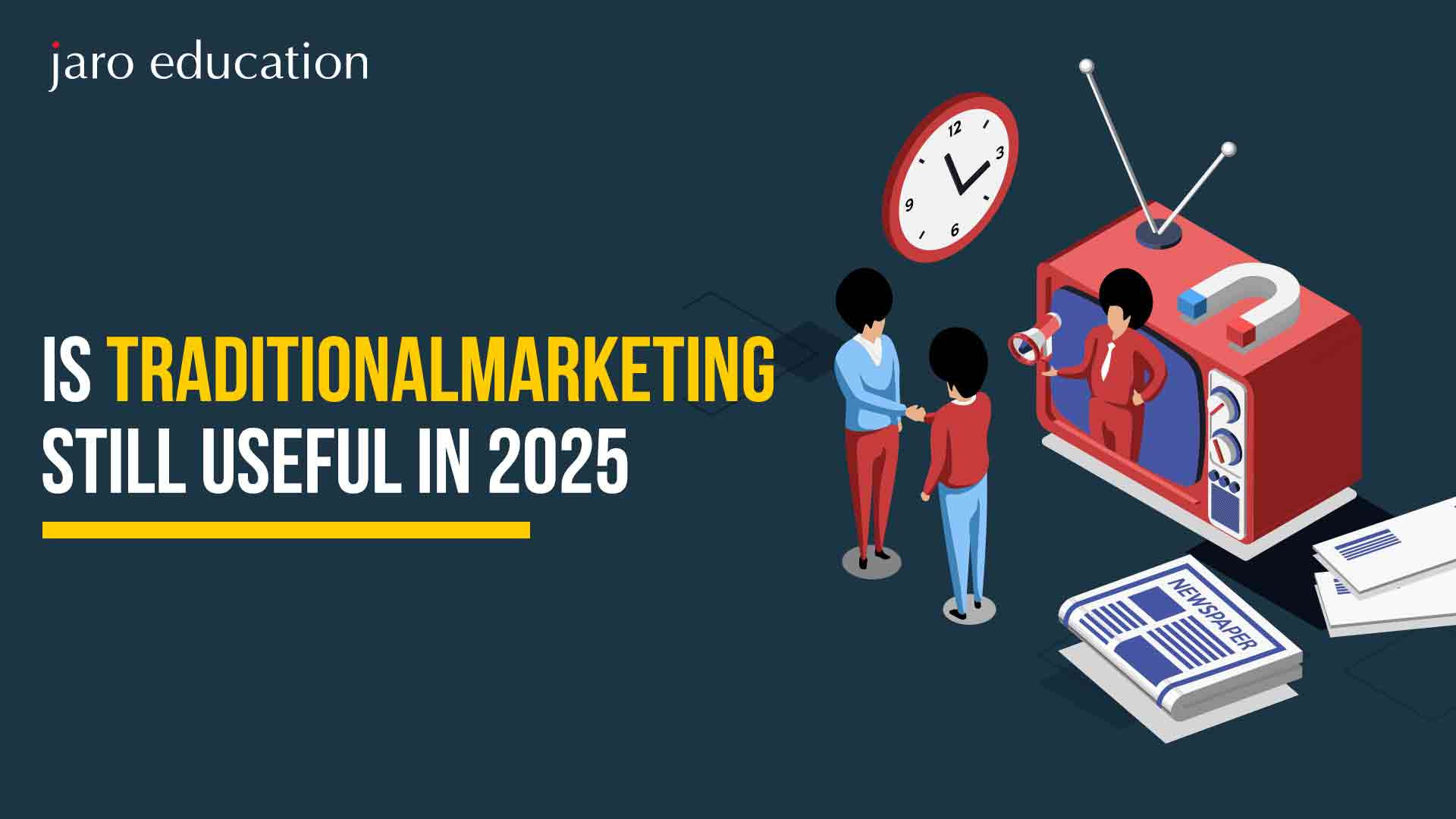
Marketing has indeed changed over time, and clearly, there are differences between traditional marketing and modern marketing approaches. In many ways, the traditional and modern concept of marketing is associated with different types of approaches that reach consumers. Traditional marketing refers to techniques used for decades in advertising, including TV ads, print media, radio, and billboards. However, since the advent of digital technologies, businesses have utilized a combination of both methods to reach as wide an audience as possible.
One of the benefits of traditional marketing is its wide range of services, and this is much more for local businesses. The reason behind this is that traditional ways are well-known to most consumers, hence they will believe it more easily further causing trust. The benefits of traditional marketing apply especially when it comes to more localized or older demographics that would not get involved with digital platforms.
A prominent difference between traditional and modern marketing lies in the form of message delivery. Traditional marketing primarily employs one-way communication, while modern or digital marketing utilizes two-way interaction with the help of digital channels. Modern marketing is also supported by data analytics, which allows for more targeted campaigns. However, both approaches complement each other, and traditional marketing is still valid today, particularly in some industries.
As we consider the evolution of marketing, it is evident that although modern techniques have their place, traditional marketing remains a unique and indispensable benefit in 2025. In this blog, we will understand various aspects of traditional marketing and evaluate whether it is actually utilized in today’s business world.
Know the Difference: Traditional vs Modern Marketing
The marketing world has changed dramatically with the passage of years. Today, businesses are faced with the choice of selecting between traditional marketing methods and modern marketing methods. Generally, the term traditional marketing applies to non-internet-based strategies that aim for a mass audience through channels such as TV commercials, radio, print media, and billboards. These methods are based on one-way communication, through which businesses project their messages to consumers and do not expect any direct feedback. For instance, a TV commercial may reach millions of viewers; however, no instant feedback is obtained from the viewers.
Meanwhile, modern marketing mainly relies on online channels and digital tools that reach highly targeted audiences. Such marketing uses various social media sites, search engines, and email campaigns to connect businesses with the target audience to allow for two-way communication with the audience. For example, a social media ad will have elements of liking, commenting, or even sharing to make the experience interactive. Unlike traditional marketing, through which, as the name suggests, messages are broadcasted broadly, modern marketing applies sophisticated data-driven campaigns directly addressing specific consumer needs and behaviors.
Comparatively, traditional marketing tools like print ads and TV commercials have mass reach advantages but lack the personal touch and interactivity offered through more modern methods. Modern marketing allows brands to fine-tune their messaging based on consumer data with tools like Google Ads and Facebook targeting, which is much more tailored. Modern marketing strategies, such as influencer marketing, leverage social proof and real-time engagement, which is completely opposite and personalized as compared to traditional marketing methods.
To sum up, even though traditional marketing has its place, where it serves the purpose of wide reach, modern marketing is stronger in targeting and interaction, which is why most businesses today rely on this method.
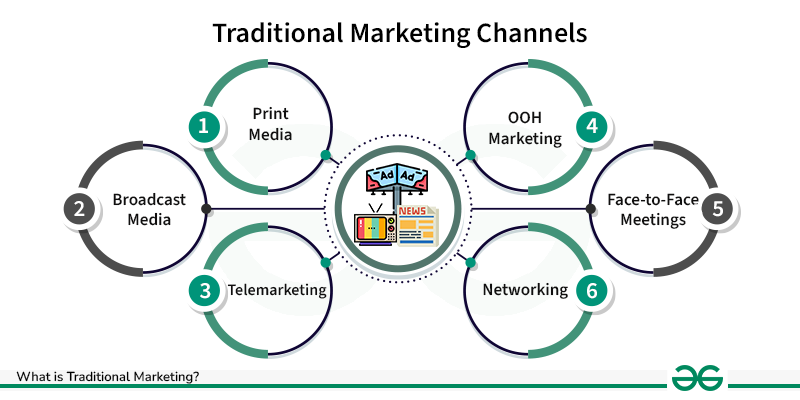
*.geeksforgeeks.org
Advantages of Traditional Marketing Method
Traditional marketing still has massive advantages, considering the wide adoption of digital marketing by many industries today. The benefit of traditional marketing is that of a higher and wider reach level. Traditional channels, such as television, radio, print adverts, and road signs, serve to reach a lot of people. Mostly, these campaigns capture attention within a broader category of people than those who probably do not attend to digital sites. This explains why TV advertisements still attract numerous viewers. According to an online report, 82% of consumers find print ads to be more trustworthy than digital ads.
Another advantage of traditional marketing is the credibility and trust that traditional marketing has. Consumers tend to believe established media outlets, such as newspapers and television, more than newer online sources. The trust factor is crucial in long-term brand loyalty because customers often feel comfortable with brands that use credible, established platforms.
Traditional marketing also has a tangible and physical existence. Printouts such as flyers, brochures, and posters create a real-world memory of a brand, which can therefore leave a long-lasting impression. The real world much more often reminds people of something when it exists physically rather than in digital form.
Moreover, traditional marketing is often more effective for local targeting. Businesses with regional or local customers can use traditional methods like local TV ads, community newspapers, and billboard advertising to specifically target nearby consumers. A local pizza restaurant, for example, could see a direct impact from a strategically placed billboard or a coupon mailed to homes within a few miles of the store establishment.
Studies have proven, time after time, that traditional marketing still holds significance.
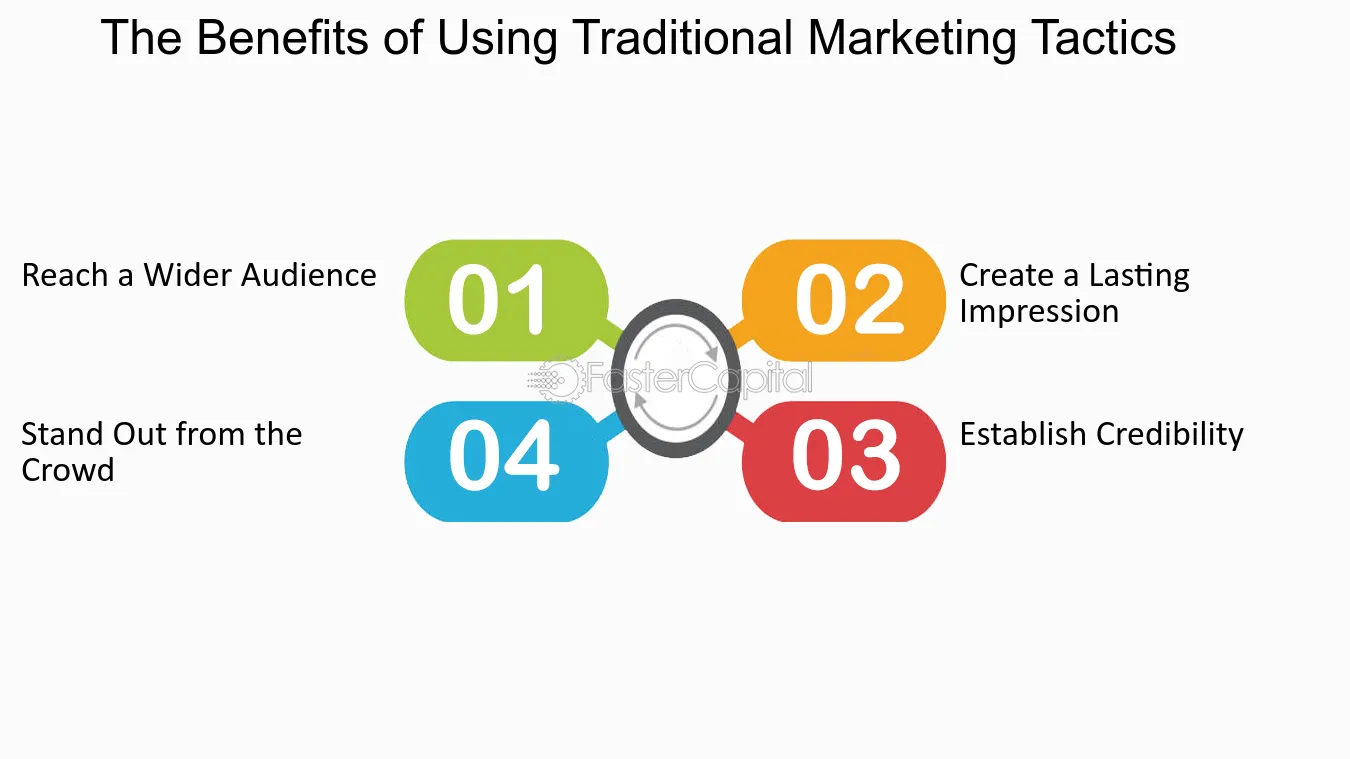
*fastercapital.com
Challenges of Traditional Marketing
One of the major challenges of traditional marketing is that most methods are quite expensive, such as TV and print ads. For instance, a 30-second commercial on television can cost thousands or even millions of dollars depending on the network and timing. Similarly, print ads in magazines or newspapers are also expensive, especially for front-page placements.
The other challenge is that traditional marketing has a very low ability to track results. Digital marketing, for example, has tools at its disposal that have immediate analytics about audience engagement, conversion rates, and much more. Such tracking capabilities are not available in traditional marketing. Because of that, it is very challenging to ensure accurate ROI (return on investment). For example, when a person watches a TV ad, one cannot get immediate information about how many people made a purchase or visited a website after watching the ad.
There is also another factor to be considered i.e. change in audience behavior. The millennial and Gen Z generations have less interest in traditional media such as TV and print. They are more attracted to digital platforms, including social media, streaming services, and online content. This demographic shift challenges businesses relying heavily on traditional marketing methods because younger consumers are increasingly disconnected from these channels.
Modern marketing has tackled some of these issues by utilizing digital platforms that provide analytics and more targeted approaches. For instance, digital ads can be tracked minutely to measure their effectiveness, and marketers can target specific demographics based on detailed data. The use of social media advertising, search engine optimization (SEO), and email marketing provides businesses with powerful tools to engage directly with their desired audience and measure the results effectively.
How to Combine Traditional and Modern Marketing for Maximum Results?
Businesses can have maximum marketing effectiveness by benefiting from an integrated marketing strategy that combines traditional and modern techniques. It can reach a wider audience while engaging customers through multiple channels: broad exposure and credibility are offered through traditional marketing, whereas with modern marketing, the possible targeting of the desired market is achieved in real time.
For instance, a retail brand could utilize direct mail to reach local customers with personalized coupons or offers, which will increase foot traffic to their physical store. Meanwhile, they could run social media campaigns to reach a wider audience, perhaps showcasing promotions, sharing customer testimonials, or announcing new products. That way, they can ensure they are reaching both their local community and a wider, online audience.
Another example is a restaurant that can take advantage of advertising its specials with local radio and newspaper ads but also utilizing Instagram ads with colorful food images to appeal to younger, more digitally connected customers. The traditional ads build awareness locally, but the digital ads build social impressions and online bookings.
Success depends on knowing the target audience and which strategy mix will best work for your business. For example, a local business will benefit more from traditional marketing by using direct mail and community events, whereas a global brand would be better suited to use more digital media. However, even global brands may use traditional marketing media like TV advertising to support their digital efforts in order to present a seamless brand experience across multiple touchpoints.
Ultimately, combining modern and traditional marketing techniques allows businesses to create a comprehensive, multifaceted approach toward reaching a diverse audience, building trust, and measuring success.
Applications of Traditional Marketing
Traditional marketing remains a crucial application in most industries, offering various ways through which businesses can reach their target audience. The key application is in the use of TV ads, which is still one of the most effective tools for mass reach. While digital platforms are on the rise, television commercials still have a high reach and visibility, thus ideal for businesses that seek to build brand awareness on a large scale. For instance, major brands in food, beverages, and automobiles still depend on TV advertisements for effective marketing campaigns, enjoying the credibility and trust that traditional media offers.
Print media is also an important benefit of traditional marketing. Newspapers and magazines provide an opportunity to reach both local and national audiences. Local organizations may use print in community newspapers to connect with local customers, and national brands can use such space in higher-level publications to leverage distribution. Another option is direct mail, which connects businesses with consumers in their mailboxes and almost every other communication device – including mobile phones. Statistics indicate that direct mail has a higher response rate than digital advertisements, and this makes it quite effective for particular types of businesses.
Billboards and posters are additional traditional marketing methods that are still widely used, especially in urban areas. They provide visibility in high-traffic locations, ensuring that brands remain visible to a large audience. This type of marketing is especially effective for businesses looking to increase brand recognition or promote a local event or sale.
Radio advertising also has an edge due to its localized reach, especially when connected with sponsorships or events. It gives both a mass and select reach as per the listeners of the radio station.
Using these applications, businesses can effectively drive campaigns using traditional forms of marketing.
Learn Marketing From Jaro’s Pool of Courses Offered by Top-ranked Institutions
Jaro Education has several programs focusing specifically on marketing which makes individuals ready to excel in this dynamic field. Individuals can make the most from their certification to degree-level programs. You could also opt for their flexible and highly accessible online training courses. Jaro Education develops courses in collaboration with top universities and institutions to bring high-quality content, expertise, and knowledge of the industry directly to the student. Courses are ideal for professionals looking to boost their career prospects and enhance skills in order to stay ahead of the ever-evolving marketing world.
Conclusion
To conclude, traditional marketing is still a highly effective strategy in the marketplace of business today. It is broad-reaching, credible, and can produce real, tangible results. Although digital marketing has become more prevalent with time, traditional marketing, such as TV ads, print media, and direct mail, remains highly effective for persuading a broad range of audiences, especially for local businesses. When combined with modern marketing strategies, businesses can develop a more multidimensional approach to maximize impacts. Thus, understanding your audience and the perfect blend of these two approaches guarantees that you capitalize on the merits of each so that deeper engagements, brand trust, and a long-term existence are guaranteed.
Frequently Asked Questions
The future of marketing will be driven by both digital and traditional marketing, with an emphasis on digital technologies. With the blend of both marketing channels, businesses can drive successful marketing campaigns.
Yes. Traditional marketing is still effective with businesses relying highly on TV ads, print ads, etc, targeting especially for local businesses and brand building.
Modern and traditional marketing both have their own upsides and downsides, however with a strategic blend of both marketing forms, one can achieve a higher rate of success.
The current marketing era is driven by digital marketing with the use of various digital tools, however, traditional marketing still plays a prominent role in targeting a wider range of audience.









